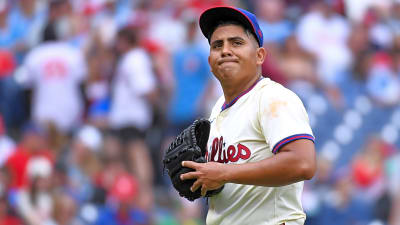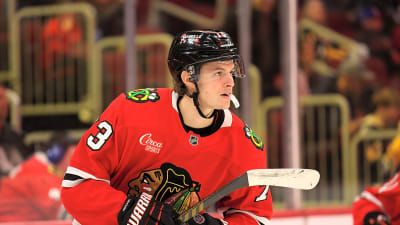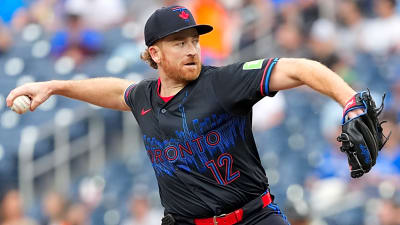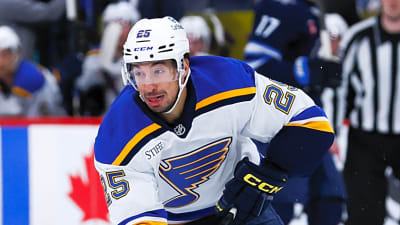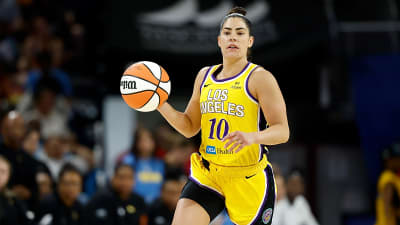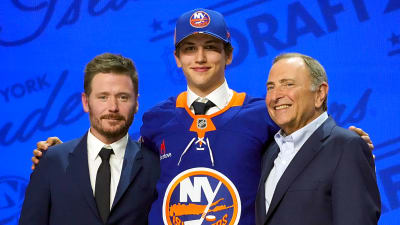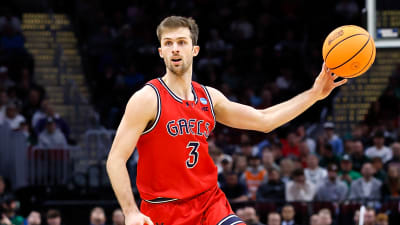Noa Essengue is young and exciting. Nolan Traore is young and currently thriving. Noah Penda is not as young, but he seems incredibly reliable and like he might be the most NBA-ready prospect on day one for the 2025 international class. It starts with his shooting, 34 percent on 73 spot-up three-point attempts this season and nearly 41 percent on 41 contested threes. He’s also shooting 57 percent at the rim, in the 91st percentile of scoring efficiency as a cutter and 74th percentile in terms of offensive rebounds. His offensive game is malleable and projects to fit around star talent. Exactly what NBA teams are looking for in non-superstar prospects.
Penda is popping on the other side of the floor, too, though. His averages of 1.4 steals and nearly one block per game make him one of only two players in the French Jeep Elite league who are in the top two of both stats with 10 or more games played -- former Oklahoma City Thunder wing Andre Roberson also qualifies, but has only played in five games. But Penda’s defensive intrigue is about more than his counting stats.
Throughout the season, his versatility has been very impressive. At 6-foot-8, he, of course, can guard forwards and matches up well there, but Le Mans has comfortably assigned him to match up with practically every position except center. He’s been tasked with opposing point guards and shooting guards. He’s guarded forwards on the perimeter and down low. And while they haven’t seemed keen on having Penda matchup with a center for consecutive positions, they are comfortable with him switching and taking on a low-post assignment when necessary.
What makes Penda effective at guarding positions one through four starts with his strength. Opponents break the perimeter, and when they make contact with his chest, he doesn’t move, like at all. NBA players will pose a different challenge on this front, but his ability to body high-level professionals comfortably at this stage of his career is a great sign.
Penda is also great at contesting on drives without fouling. He does a good job of absorbing his opponents, getting his arms straight up, and making opposing finishes reach an increased level of difficulty. Another strong skill of Penda’s is his rotations. A lot of his blocks come from well-timed help on drives, and he covers ground quickly when recovering to the perimeter, often being a step ahead of where the open man is.
With the positives, there are still some key areas for Penda to improve, especially at the NBA level. For starters, he does not get nearly tight enough on the perimeter. Especially with the recent officiating evolution in the NBA that allows for more physicality on the perimeter, Penda will have to become more comfortable getting tight with his matchups on the perimeter and making contact with them much earlier than he currently does.
He has a similar issue when defending one pass away as well, occasionally aimlessly drifting towards the ball or the lane to get ready to help when his opponent is set up perfectly to get a quick catch and shoot off. He hasn’t paid the price for this a ton in France, but in the NBA, he will be punished. First on the court, and if he doesn’t adjust, then by being off the court entirely.
Currently, these areas for improvement are not surprising and given the defensive skill he has shown this season, you would expect Penda to make these adjustments with NBA experience. If he does, and his offensive game translates, Penda could be a solid and reliable rotation player by his second season.
More must-reads:
- Rockets to sign former No. 3 pick to five-year extension
- Malik Beasley gambling allegations highlight growing problem in professional sports
- The 'NBA all-time scoring leaders' quiz
Breaking News
Trending News
Customize Your Newsletter
 +
+
Get the latest news and rumors, customized to your favorite sports and teams. Emailed daily. Always free!

